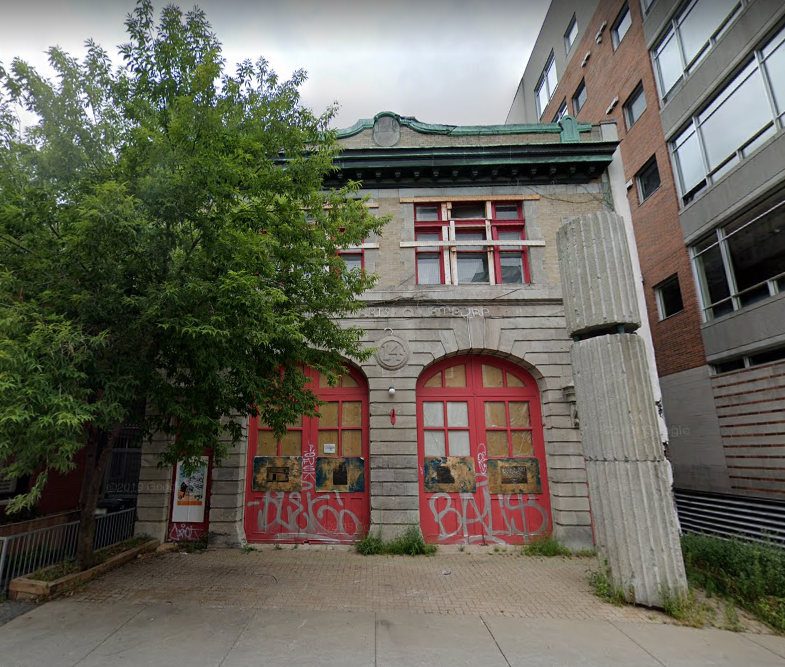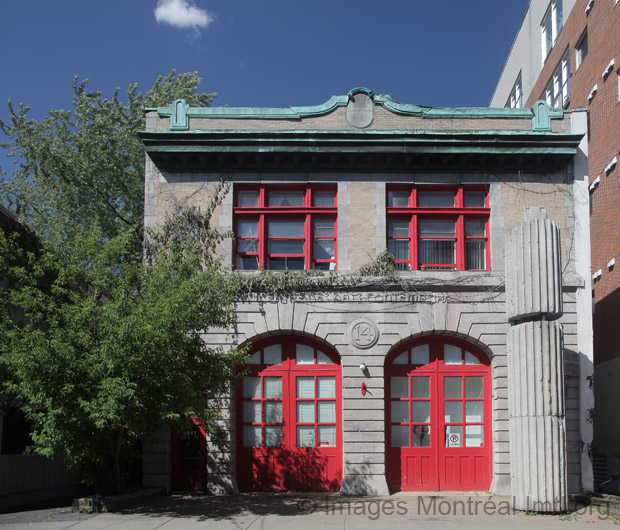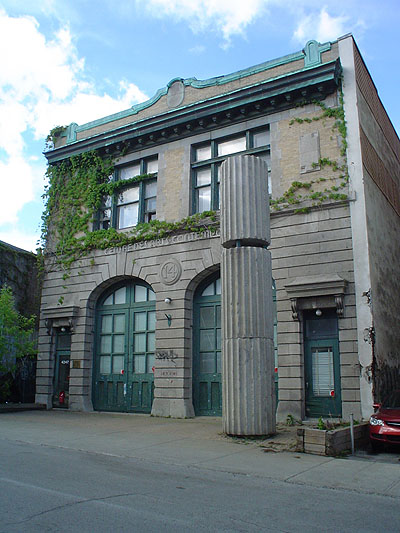“Fire Station no. 14, inaugurated in 1913, is one of twenty-two fire stations built in Montreal between 1900 and 1918. The historic value of the fire station no. 14 lies in the fact that it bears witness, along with the other fire stations built since the last third of the 19th century, to the City of Montreal’s firefighting efforts, and also bears witness to the evolution of the old Saint-Jean-Baptiste district.
The artistic value of the former fire station no. 14 lies in the importance of its designer, the architect Louis-Roch Montbriand (1860-1923). Montbriand was one of the most important architects in the Montreal area during the first half of the 20th century and was also responsible for the design of the fire station no. 16 (1041 Rachel Street East, 1891), the former fire station no. 20 (181 Saint-Antoine Street West, now incorporated into the Palais des Congrès, 1908) and the fire station no. 27 (5252 Gatineau Avenue, 1908).
Although modest, the building has an artistic value that shows a kinship in some of its elements with the Beaux-Arts style, predominant at the time of its construction. The main façade of the fire station is characterized by symmetry and the presence of numerous ornamental details, including the contrast between the facing brick of the second floor and the grey facing stone of the first floor with its two arches, and the stone brackets supporting the lintels above the small doors. The composition of the rear façade is inspired by functionalist architecture, characterized by the absence of ornamentation.
The urban value of fire station no. 14 is reflected in the fact that it stands out advantageously from the surrounding buildings by its scale, the ornamentation of its main façade and its public vocation. The rear façade of the fire station also stands out from the neighbouring houses on Coloniale Avenue by its setback and the presence of the hose tower.
Finally, fire station no. 14 has a symbolic value on a national scale. Located within a residential block, this two-storey building is a physical landmark on Saint-Dominique Street, a familiar element to the residents of the area, and a true symbol through its role as a key player in the production of works produced under the program for the integration of the arts into architecture in Quebec.” (free translation of the notice on the website Propriétés municipales d’intérêt patrimonial, Ville de Montréal – in French)





